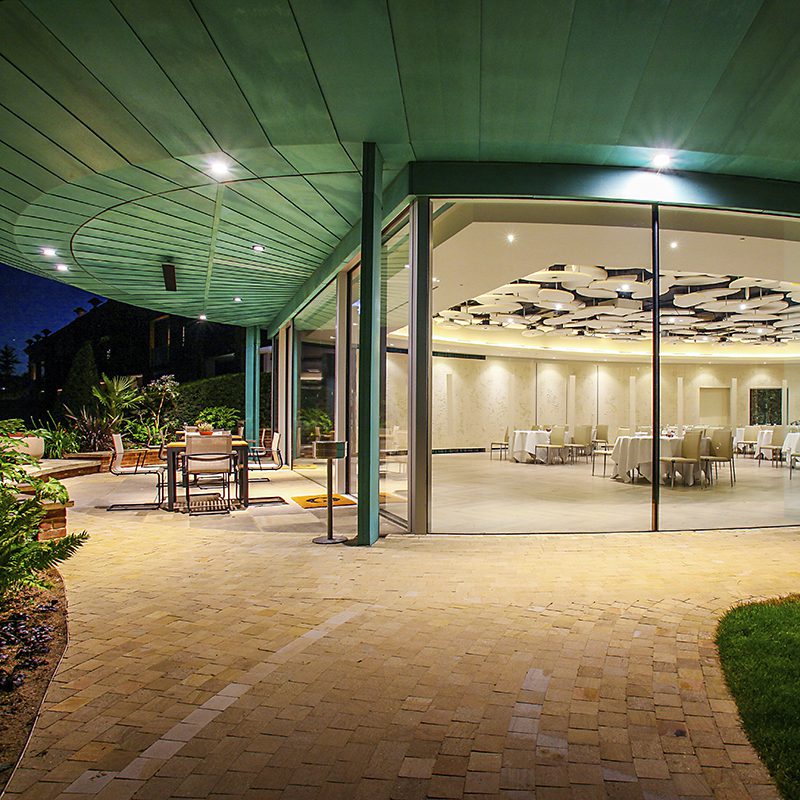Simon Walker of SIG Zinc & Copper and Sandy Harrison of KME TECU answer readers’ questions on copper.
What are the main advantages of copper cladding and roofing over other types of metal?
The main advantages of choosing copper for roofing and cladding are its longevity and malleability. Furthermore, it is 100 per cent recyclable, requires minimum maintenance post installation, and compared to other metals can be installed in roofing applications with no underside corrosion issues, which can affect some other non-ferrous materials.
Is copper suitable for all types of roof and wall build-ups?
Yes. Copper can be installed using various techniques from traditional seam roofing, angled seam façades, shingles, and flat-lock tiles through to prefabricated and engineered solutions with a range of sub-constructions. It is truly a versatile material with different finishes enhancing the overall aesthetics of the application.
Do copper roofs and walls need to be ventilated?
Copper can be designed as a ventilated or non-ventilated roof and wall application. It is usual to use a ventilated façade depending on the substrate, but this is not essential for the longevity of the copper.
Can copper be used for gutters, downpipes and flashings?
Yes, for hundreds of years copper has been used for cappings, ridges, flashings and full rainwater systems due to its relative softness and ease of formability. It is therefore ideal for these types of applications.
What copper finishes are typically available and what are the main differences between them?
Copper has a variety of surface finishes that are available from production. TECU Classic copper is, as the name suggests, a natural, bright, copper. Pre-oxidised TECU Oxid is a surface developed from this using an industrial process, which is the same as the years of natural weathering but available as a brown oxidation initially. TECU Patinas is available in pre-patinated green – after mechanical, chemical and thermal processing – to give the familiar green variations right from the start. The pure-through alloys of TECU Brass, TECU Bronze and TECU Gold provide further choice.
How does copper perform with regards to fire?
TECU sheets and strips correspond to building material class A1, according to /DIN 4102-1/. Their fire behaviour is: ‘not flammable/no contribution to the fire.’ The overall construction should be reviewed with timber substrates changed to metal profiled sheet, insulation type carefully considered, and breather membranes and vapour barriers able to provide suitable fire performance. SIG Zinc & Copper offers advice and system warranties for these applications.
How long will copper cladding and roofing typically last?
When correctly designed and installed a copper roof can have a life expectancy in excess of 100 years minimum. In the case of TECU, the rates of copper elutriation (washing away) under atmospheric weathering results in a lifespan for copper roof claddings of more than 250 years (please click here for details).
How should you maintain a copper roof?
TECU products are generally maintenance free, with rainfall alone sufficient to clean the surface in most situations. It is good practice to review roofs a visual inspection from time to time making sure that leaves are cleared from gutters, but no regular cleaning or maintenance regime is required.
Can copper be recycled at the end of its life?
Yes, copper is 100 per cent recyclable, and indeed, TECU Copper with the (ECO) ecological copper logo confirms that the product has been produced using copper that is 100 per cent recycled.
What warranties are available with copper cladding and roofing?
Properly designed and correctly installed, copper will last at least 100 years (in many cases longer). So, taking this into consideration and in partnership with experienced partner contractors of independent trade associations, a ten-year material guarantee is available, giving peace of mind to those requiring it for TECU materials. SIG Zinc & Copper can provide system warranties that cover all the components supplied – provided that they are installed by an accredited installer.
For further information visit www.kme.com or www.sigzincandcopper.co.uk
Source: Architecture Today

